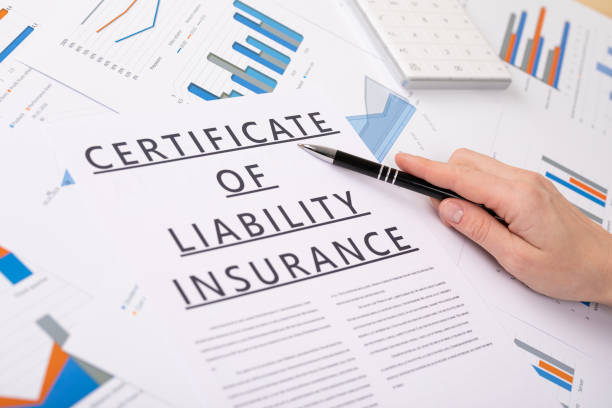



In London’s property industry, where landlords, agents, and contractors collaborate daily on lettings, refurbishments, and maintenance, verifying insurance coverage is essential. A Certificate of Liability Insurance serves as proof that a business or contractor holds active insurance — such as public liability, employers’ liability, or professional indemnity — and complies with legal and contractual standards.
At Fraser Bond, we work with landlords, investors, and property service providers to ensure every contractor and partner on site meets required insurance standards, reducing legal exposure and protecting asset value.
A Certificate of Liability Insurance (COI) is an official document issued by an insurer or broker confirming that an organisation or contractor holds valid liability coverage.
It summarises the key details of the policy without disclosing confidential terms or pricing.
Typical certificates outline:
Insured party name – The business or individual covered.
Insurer and policy number – Verifying authenticity and coverage.
Types of cover – e.g., Public Liability, Employers’ Liability, Professional Indemnity.
Policy limits – The maximum amounts payable per claim.
Effective and expiry dates – Showing the current policy period.
Additional insureds or interested parties – Sometimes includes landlords, property owners, or main contractors.
In the UK, many insurers issue electronic certificates that can be easily shared with landlords, managing agents, or compliance teams.
In the capital’s fast-paced property and construction ecosystem, risk travels through every contractual relationship — from landlords to managing agents, and from developers to maintenance contractors.
Requiring a Certificate of Liability Insurance helps:
Confirm active coverage – Ensuring every contractor, tenant, or supplier working on site is insured.
Meet legal obligations – For example, Employers’ Liability Insurance is mandatory under UK law if staff are employed.
Protect property owners – A landlord may face indirect liability for uninsured contractor accidents or damage.
Reduce financial and reputational risk – Claims against uninsured parties can lead to disputes and delays in repairs, projects, or tenancy operations.
Support due diligence – Certificates are often requested during procurement, tenders, and lease negotiations.
At Fraser Bond, we incorporate insurance verification into our property compliance processes, ensuring contractors and tenants align with the landlord’s risk profile.
Depending on the business and its activities, a Certificate of Liability Insurance may show several cover types:
| Type of Insurance | Purpose / What It Covers |
|---|---|
| Public Liability Insurance | Injury or property damage to third parties. Common for trades, maintenance, or property managers. |
| Employers’ Liability Insurance | Required by law for UK businesses employing staff. Covers workplace injury or illness. |
| Professional Indemnity (Errors & Omissions) | Protects against negligence, incorrect advice, or service errors. |
| Product Liability Insurance | Covers damage or injury caused by products supplied or installed. |
| Property Damage or Contractors’ All-Risks | May apply to developers, contractors, or refurbishment specialists. |
Each policy will specify its coverage limits — typically between £1 million and £10 million depending on business scale and activity risk.
Fraser Bond recommends property professionals take these steps before approving a contractor or tenant for work or occupancy:
Check policy dates – Ensure coverage is current and will remain active for the project duration.
Verify limits of indemnity – Confirm that liability limits meet your minimum contractual standards (e.g., £5 m public liability for multi-unit buildings).
Confirm named insured matches the contractor – The company performing work must be the one insured.
Look for Employers’ Liability – Required if staff, apprentices, or subcontractors are employed.
Review for endorsements – If you are listed as an “additional insured” or “interested party,” ensure this appears correctly.
Retain records – Keep COIs on file for audit or compliance reviews, especially in managed properties.
Our compliance and advisory services ensure every property transaction and contractor relationship is underpinned by adequate insurance. We assist clients by:
Verifying Certificates of Liability Insurance for contractors and service providers.
Establishing minimum cover thresholds in lease or contract documentation.
Coordinating with brokers to confirm active, compliant cover.
Integrating insurance verification with property management, letting, and development compliance workflows.
Educating landlords, investors, and tenants on their risk and liability obligations.
With Fraser Bond’s guidance, clients avoid exposure from uninsured third parties and maintain full compliance with UK regulations.
Before allowing work or tenancy in your property, make sure every contractor and service provider presents a valid Certificate of Liability Insurance.
Visit FraserBond.com or contact our London compliance team for expert assistance with contractor verification, risk management, and property compliance.